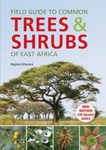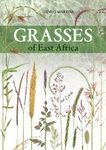![A Classification of the Mountain Vegetation of the Fynbos Biome A Classification of the Mountain Vegetation of the Fynbos Biome]()
Click to have a closer look
About this book
Customer reviews
Related titles
About this book
Language: English with summary in English and Afrikaans
The mountain vegetation of the Fynbos Biome is classified and described. Structural, floristic and environmental data were collected in 507 plots. The classification is mostly based on structural data and some higher taxa (e.g. families such as Ericaceae and Penaeaceae) and was produced using the Braun-Blanquet table sorting technique. Each community is described according to its stratification, formation, differentiating features, dominant taxa, distribution, environment and synonymy. Keys to identifying the communities are provided.
The classification is hierarchical and communities at the various hierarchical levels are termed groups, subgroups, series, subseries and types. Four groups are recognized, one of which is Fynbos and three of which are non-fynbos viz Forest & Thicket, Karroid & Renoster Shrubland and Grassland & Grassy Shrubland. The non-fynbos groups are not extensive in the mountains and are subdivided to the series level.
Fynbos is subdivided into two subgroups, namely Eastern Fynbos and Mountain Fynbos. Eastem Fynbos consists of only one series, Grassy Fynbos and, as the names imply, it is a grassy community more or less restricted to the east. Grassy Fynbos is often associated with fine-textured soils. Mountain Fynbos is subdivided into five series, viz. Asteraceous Fynbos, Restioid Fynbos, Ericaceous Fynbos, Proteoid Fynbos and Closed-Scrub Fynbos. Asteraceous Fynbos is dominated by shrubs and is found on the driest and most mesotrophic fynbos sites. Restioid Fynbos is found under wetter conditions and is dominated by restioids. At the most mesic extreme, another shrub-dominated community is found but in this case the shrubs are mostly Ericaceae. Proteoid Fynbos is often also associated with mesic conditions but a relatively deep soil is also characteristic. Closed-Scrub Fynbos is found along streams and rivers and, like Proteoid Fynbos, it is often dominated by tall shrubs but in the case of Closed-Scrub Fynbos the tall shrubs are non-proteoid.
The Fynbos Group is subdivided into 16 subseries and 63 types. The subseries are indicated by environmental terms, e.g. Wet Ericaceous Fynbos, and the types are all given unique place names e.g. Ruitersberg Wet Ericaceous Fynbos. On the basis of an analysis of the distribution of communities, seven mountain regions are recognized. Each region is characterized by a specific combination of communities.
Customer Reviews






















![Flora Vascular de Canarias [The Vascular Flora of the Canary Islands]](http://mediacdn.nhbs.com/jackets/jackets_resizer_medium/26/262479.jpg?height=150&width=102)











